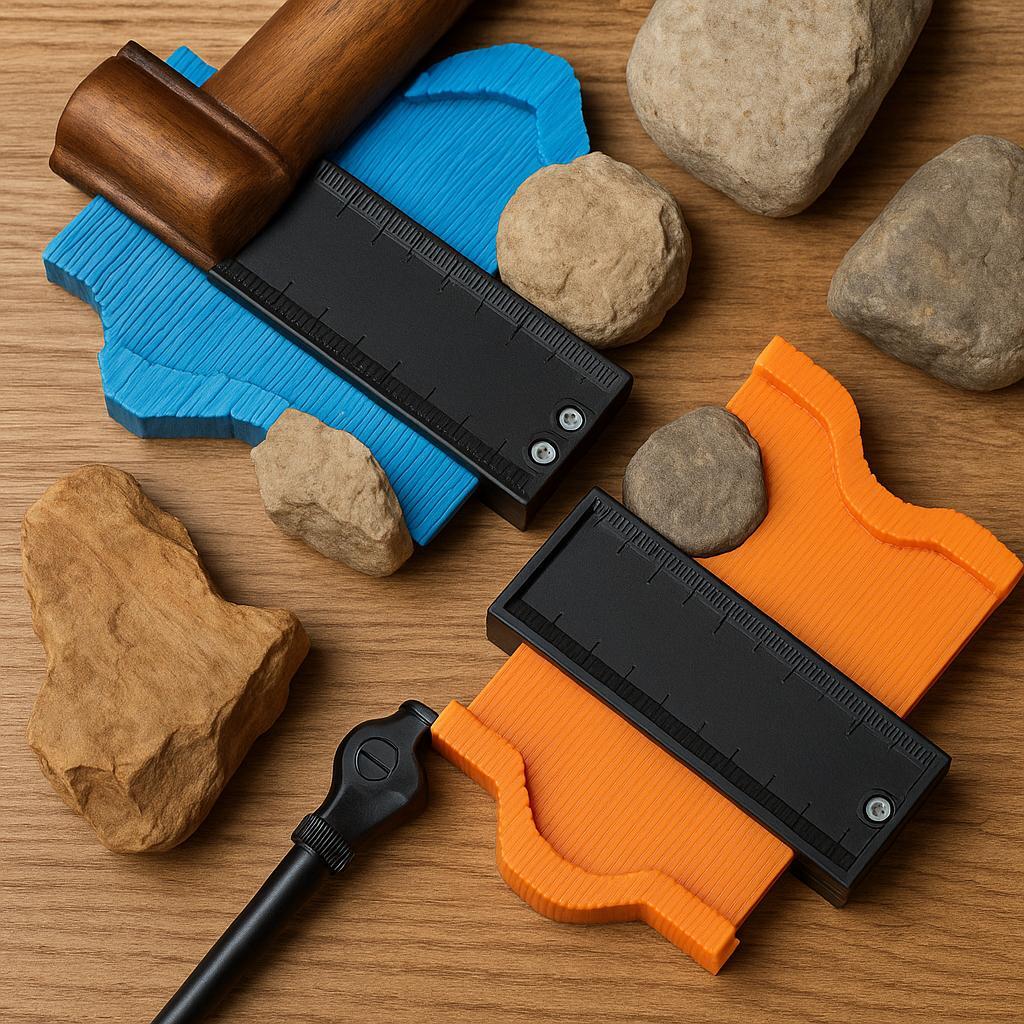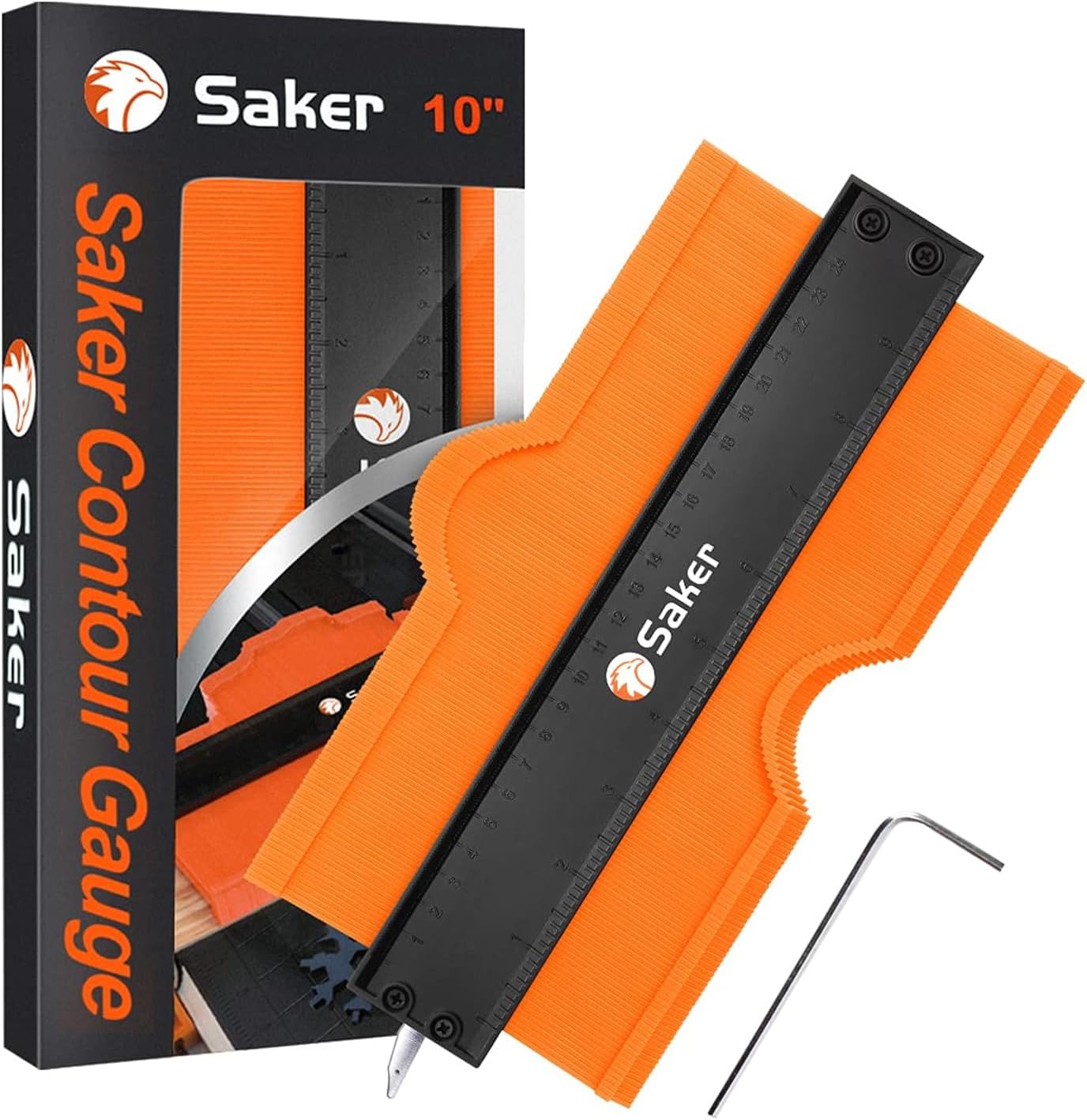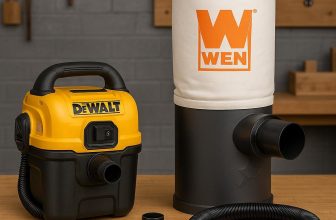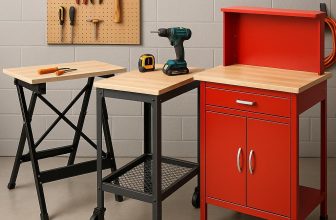
Irregular Shape Tracing: best Contour Gauge Tools
Every DIYer eventually meets that one corner,pipe,or baseboard that laughs at straightedges. That's where a good contour gauge turns guesswork into clean, confident cuts. In this guide, we're looking at three popular options that promise fast, precise shape duplication for flooring, trim, tile, and more-without the cardboard templates and repeated test fits.
We'll compare the Saker Contour Gauge 10″+5″ set with adjustable lock (a versatile duo for big sweeps and tight spots), the 10-inch Widen Contour Gauge from Lambor Studios (built wider for more stable tracing and dual inch/centimeter markings), and the Saker 10-inch Profile Tool with lock (a compact, luminous, throw-it-in-the-toolbag staple). Each uses durable ABS pins,aims for fast,accurate transfers,and targets the same jobs-from door casings and circular frames to ducts and car-body contours-but they differ in size,locking mechanisms,and handling.
Read on as we break down precision, ease of use, durability, and who each tool is best for-whether you're laying LVP around a doorway, scribing tile to an uneven wall, or looking for a practical, giftable gadget for the DIYer in your life.
Saker Contour Gauge Duplication-Adjustable Lock-Precisely Copy Irregular Shape-Irregular Woodworking Tracing-must Have Tool Christmas Gifts for DIY Handyman Men Husband Dad 10 Inch+5 Inch
Shape matching on floors, trim, and car panels feels effortless with this dual-size contour gauge set. The 10-inch body handles long runs of baseboard or laminate, while the 5-inch slips neatly into tight spaces around pipes and corners. I like the lockable pins-after pressing into an irregular profile, a quick lock keeps the outline intact while I mark and cut. The adjustable tightness lets me fine-tune tension as the tool wears in, and the ABS plastic pins glide smoothly without snagging delicate finishes.From tile scribing to molding repairs, it's become a reliable “grab-first” template tool in my kit.
| Feature | Details |
|---|---|
| Sizes Included | 10 in + 5 in |
| Material | High-strength ABS |
| Locking | Adjustable tension + pin lock |
| Use Cases | Tile, laminate, carpet, molding, auto body |
| Package Weight | Approx.1.64 lb |
| Ratings | 4.6/5 from 8,800+ reviews |
The precision is solid for everyday DIY and pro errands-press, lock, trace, cut, done. It's rustproof, portable, and consistent across projects where transferring contours quickly is the difference between a clean fit and a do-over. I've used it for duct cutouts, circular frames, and oddball profiles; the smaller gauge frequently enough saves me when access is cramped, while the larger one speeds up long scribe lines. Below are the practical upsides and trade-offs I've noticed:
- Pros: Smooth pin action; reliable lock holds shapes; two handy sizes; durable ABS; quick learning curve; versatile across woodworking,flooring,and auto panels.
- Cons: plastic pins can flex if over-pressed; occasional re-tensioning needed; 10-inch width may require repositioning for very large contours; meant for tracing, not precise dimension measuring.
Check availability and today's price on Amazon
Contour Gauge 10 inch, Widen plastic Profile Gauge Duplicator, Precisely Copy Irregular Shapes Wood template Measuring Tool for Perfect Fit and Easy Cutting (10 Inch Widen-Red)
| Spec | Detail |
|---|---|
| Width | 10 in (widen design) |
| material | ABS plastic, rustproof |
| Scale | Inch & cm, both sides |
| Color | Red |
| use | Tiles, laminate, carpet, pipes, ducts, molding |
| Warranty | 90-day after-sales + lifetime worry-free |
In my shop, the extra-wide 10-inch profile makes quick work of baseboards, doorjambs, and pipe cutouts-press it in, the pins conform, and the traced line is ready for a precise cut. the high-strength ABS glides smoothly and resists rust, and the dual-scale markings (inch and centimeter on both sides) keep measurements intuitive whether I'm scribing tile or trimming laminate. Setup is as simple as the included steps suggest: press to the profile, mark the outline, then cut to fit-no more cardboard templates or guesswork.The bright red body is easy to spot on a busy bench and the widened footprint captures larger, more complex contours in one pass.
- Pros: Saves time by duplicating shapes instantly; wider body improves precision on irregular profiles; durable, rustproof ABS; convenient inch/cm scales on both sides; versatile for flooring, carpentry, and car-body work; backed by friendly support with a lifetime worry-free warranty.
- Cons: Plastic pins aren't as rigid as metal-avoid excessive force; the wider 10-inch form can feel bulky in cramped corners; no locking feature is advertised, so keep steady while transferring; color may vary slightly by monitor, and listing notes minor measurement tolerance.
If you often scribe around trim, pipes, or curved molding, this wider gauge delivers a clean, repeatable template that keeps cuts tight and installs tidy. I've found the best results come from applying even pressure, keeping the tool flush to the surface, and tracing with a sharp pencil for a confident, accurate line-simple steps that turn tricky profiles into easy cuts.
Get the best fit-see it on Amazon
Saker Contour Gauge (10 Inch) Profile Tool with Adjustable lock,Christmas Gifts for Men Women Dad Boyfriend Husband-Precisely Copy Irregular Shape Duplicator-Cool Gadgets for Woodworking Tool Tracing
I've used this 10-inch contour gauge on flooring, tile, trim, and even deck boards around curved pool edges, and it consistently delivers clean, precise transfers. Press the pins against any irregular edge-door frames, pipes, stair risers-and the outline locks in so you can trace and cut without losing the shape. The adjustable tension lets you fine-tune how freely the pins slide (handy on delicate surfaces), and the robust ABS construction is lightweight, rustproof, and easy to spot in a busy workspace thanks to the bright color. It's a true time-saver that helps reduce waste and guesswork, especially when you're cutting around corners and tight spots.
| Quick Glance | Details |
|---|---|
| Coverage | 10 inches |
| Material | ABS plastic, rustproof |
| Capture depth | ~1.25 inches |
| Lock | Adjustable; uses hex key |
| Best for | Flooring, trim, tile curves |
- Accurate tracing: Captures complex contours for cleaner cuts around doorways, baseboards, and curved edges.
- Easy to use: Quick press-and-trace workflow that speeds up installs and reduces re-cuts.
- Adjustable and lockable: Dial in pin tension and lock the profile to transfer shapes confidently.
- Durable build: sturdy ABS holds up to jobsite use and won't rust.
- Lock nuance: Some users report the lock can slip; tension adjustment requires a small hex key.
- detail limits: Plastic pins (~1/16″) don't capture ultra-fine detail.
- Depth ceiling: About 1.25″ profile depth may be shallow for thicker trim.
- Value varies: Price-to-performance gets mixed feedback across buyers.
Ready to template tricky cuts with less trial and error? Check availability and price on Amazon
Q&A
Q: What is a contour gauge, in plain terms?
A: Think of it as a shape “photocopier.” A contour gauge uses a row of sliding pins to capture the outline of an irregular edge-like a baseboard profile,pipe cutout,or stone tile. you press the pins against the shape, lock them, and trace the silhouette onto your workpiece for a snug fit.
Q: Which products are we comparing?
A: Three popular 10-inch tools (with one combo kit):
– Saker Contour Gauge Duplication-Adjustable Lock… 10 Inch+5 Inch: a two-pack with both 10″ and 5″ gauges.
– Contour Gauge 10 Inch, Widen Plastic Profile Gauge Duplicator… (10 Inch Widen-Red): a wider-bodied 10″ design for deeper profiles.
– Saker Contour Gauge (10 inch) Profile Tool with Adjustable Lock…: a single 10″ gauge with an adjustable lock.
Q: What's the biggest difference between them at a glance?
A: Format and depth.- The Saker 10 Inch+5 Inch kit gives you two sizes for adaptability-handy when the 10″ won't fit into cramped spots.
– The Widen 10 inch (Red) emphasizes body depth, useful for taller or more complex moldings and profiles.
– The Saker 10 Inch (single) is a classic, compact 10″ option with an adjustable lock.
Q: Which one handles deep or tall profiles best?
A: The Contour Gauge 10 Inch Widen (Red) is designed with a deeper body, so it's generally better at capturing taller baseboards, thick door casings, or chunky stone edges without the pins bottoming out.
Q: Which is best for tight spaces and awkward corners?
A: The 5″ unit in the Saker 10 Inch+5 Inch kit shines in tight reveals, around fixtures, or when you need to sneak into a nook where a 10″ body simply won't fit.
Q: What about precision-are any of these more accurate?
A: Accuracy comes from fine, consistent pin thickness, good pin friction (not too loose, not too tight), and a lock that holds firm. In typical DIY use,all three deliver comparable tracing fidelity. For ultra-fine inlay or instrument-making, you may still prefer customary scribing tools after the rough transfer.
Q: Do the locks actually hold the shape while you trace?
A: Yes, but technique matters. Engage the lock, then support the gauge from the back so you're not flexing the pins as you move. If your unit allows pin tension adjustment, set it so pins slide smoothly under pressure but don't drift on their own.
Q: Are these plastic? Will they last?
A: Most contour gauges in this category use ABS plastic bodies with metal hardware in the lock. They're durable for shop and site use, but avoid dropping them onto hard edges, and don't store them with the pins compressed. Treat them like you would a good square.
Q: Can contour gauges scratch painted or finished surfaces?
A: They can if you grind them into a surface. Tips:
– Apply painter's tape to delicate finishes before pressing the pins.
– Use steady,even pressure rather than rocking the tool.
– Wipe dust or grit off both the work and the gauge first.
Q: Do these have inch and metric markings?
A: Many 10″ gauges include both, but markings vary by batch and brand. If dual-scale is critical, verify before buying or keep a tape measure handy for final dimensions.
Q: How do I get a clean, reliable transfer?
A: A quick routine:
1) Check pin tension: pins should slide but not slump.
2) Place the gauge square to the surface; press evenly until pins conform.
3) Lock the gauge without shifting it.
4) Lift straight away; don't drag.
5) Trace onto your stock, holding the gauge flat. For mirrored parts, mark orientation.
Q: What are common mistakes to avoid?
A: – Pressing too hard and bowing the pins.
– Forgetting to lock before lifting.
– Tracing with the gauge tilted, which skews the profile.
– Expecting a 10″ gauge to capture a shape wider than 10″ in one go.For longer runs, capture in sections and align reference marks.
Q: Which one is best for flooring and tile installs?
A: – Lots of awkward, tight spots (toilet bases, trim returns)? The Saker 10 Inch+5 Inch kit adds real convenience with the 5″ tool.
- Thick stone or tall baseboards? The widen 10 Inch (Red) offers extra depth.- Standard trim and laminate work with a compact kit? The Saker 10 Inch single is a straightforward pick.
Q: What about woodworking and cabinetry?
A: For scribing to walls, face frames, or molding:
– Saker 10 inch (single): simple, compact, easy to carry in a tool bag.
- saker 10 Inch+5 Inch: more versatile when you bounce between broad profiles and tiny reveals.
– Widen 10 Inch (Red): useful if you frequently encounter deep crown or stacked moldings.
Q: How do I maintain and adjust the pins?
A: – If your model includes tension screws, tune them so pins move smoothly but resist gravity.
- Keep the pins clean; a soft brush removes dust.
– avoid lubricants that could migrate onto workpieces. If you must, use a dry lube sparingly and wipe off excess.
Q: Are there limitations I should know about?
A: - Pin-based gauges can't capture undercuts or interior overhangs.
– Extremely fine details may blend if the pin spacing is too coarse.
– Very long profiles require multiple captures and careful alignment.
Q: Bottom line-how should I choose?
A: Match tool to task:
– all-purpose and compact: Saker Contour Gauge (10 Inch) Profile Tool with Adjustable Lock.
– Maximum flexibility in real-world jobs: Saker Contour gauge Duplication… 10 Inch+5 Inch kit.
– Deeper shapes and thicker trim: Contour Gauge 10 Inch,Widen Plastic Profile gauge Duplicator (10 Inch Widen-Red).If you're unsure, the dual-size kit covers the most scenarios; if you routinely meet tall profiles, the widen design is the safer bet.
| Product | Sizes | Locking / Tension | Body width | Highlights | Price / Buy |
|---|---|---|---|---|---|
| 5″ + 10″ kit | Adjustable tension + lock | Standard |
– Versatile set for trim, tile, flooring |
$29.99
|
|
| 10″ | No dedicated lock noted | Widened profile |
- Extra width improves shape capture |
$14.99
|
|
| 10″ | Adjustable lock (mixed user feedback) | Standard |
– Quick templates for doorways & trim |
$19.99
|
Unlock Your Potential
When the wall refuses to be straight and the trim has a mind of its own, the right contour gauge turns guesswork into clean lines. After looking at the Saker Contour gauge Duplication set (10 inch + 5 inch), the Widen Plastic 10-inch profile gauge, and the saker 10-inch with adjustable lock, the choice really comes down to how you work.
need versatility across small and mid-size profiles? The Saker 10-inch + 5-inch bundle covers more scenarios without juggling one oversized tool. Prefer a single, familiar footprint with a dependable lock? the Saker 10-inch profile tool keeps things simple and consistent. Regularly tracing broader or deeper contours? The Widen Plastic 10-inch model gives you more surface to capture complex edges in one pass.
Whichever route you take, a few habits pay off: check the lock before you lift, work from a clear reference edge, use a sharp pencil or marking knife for transfers, and do a quick test cut on scrap when precision matters. With those basics,any of these gauges can turn irregular shapes into predictable results-so your next cut meets the line,not the other way around.










Great insights, Nancy! I’m excited to explore some of these tools for my projects.
Thanks for sharing these recommendations, I never knew there were so many options out there for irregular shapes!
These tools look amazing, Susan! I’m always struggling with tracing odd shapes, and it’s great to see so many solutions in one place.
These tools are definitely a game changer, Christine! I love how they can simplify the process of tracing complex shapes-can’t wait to try them out!
These contour gauge tools are so versatile, Don! I’ve been looking for a way to improve my accuracy with irregular shapes, and knowing there are multiple options is really helpful!
These contour gauge tools sound like a dream come true, Rachel! I’m always on the lookout for ways to make my DIY projects easier, and I can’t wait to give these a try for those tricky shapes!
I’m really excited to check these out, Randy! Finding the right tool for those challenging contours has always been a struggle for me, so it’s great to see some solid recommendations.
I’ve had my eye on contour gauge tools for a while now, Craig! It’s awesome to see so many recommendations in one post-I’m definitely looking forward to enhancing my projects with these!
I couldn’t agree more, Eleanor! The struggle with irregular shapes is real, and these contour gauge tools seem like the perfect solution to help streamline the process and take my projects to the next level!
I completely relate, Charles! Having the right contour gauge tools can make all the difference in precision when tackling those tricky shapes, and I can’t wait to see how they improve my projects too!
I’m with you, Kathryn! It’s so refreshing to find tools that are specifically designed for tackling those awkward shapes, and I’m eager to see how these contour gauges will elevate the quality of my workmanship!
Absolutely, Peter! It’s amazing how the right contour gauge tools can transform the way we approach odd shapes in our projects, and I’m excited to start using these recommendations to achieve better accuracy and craftsmanship!
Absolutely, Helen! These contour gauge tools look like they could really simplify the challenges of working with irregular shapes, and I can’t wait to incorporate them into my toolkit for more precise and efficient results!
Absolutely, Hannah! It’s incredible how contour gauge tools can take the hassle out of working with unconventional designs, and I’m looking forward to trying them out to enhance my accuracy and creativity in future projects!
Absolutely, Patricia! The versatility of contour gauge tools is truly unmatched, and I’m excited to use them for creating flawless fits and enhancing the overall finish of my work with irregular shapes!
I’m totally on board, Judy! Finding the right contour gauge tools makes a world of difference when it comes to tackling those tricky shapes, and I can’t wait to explore the options and improve my project outcomes!
Absolutely, Jordan! The benefits of using contour gauge tools for irregular shapes are undeniable, and I’m eager to see how they can help elevate the precision and quality of my work as I take on more complex designs!
Absolutely, Thomas! It’s amazing how contour gauge tools can streamline the process of replicating complex shapes, and I’m excited to see how they improve the efficiency and accuracy of my upcoming projects!
Absolutely, Carrie! The way contour gauge tools can adapt to any curve or corner is simply remarkable, and I can’t wait to incorporate them into my toolkit to elevate my craftsmanship and tackle those challenging shapes with confidence!